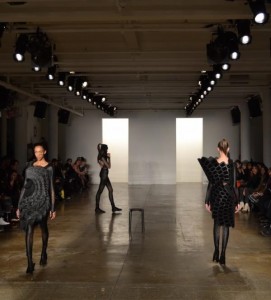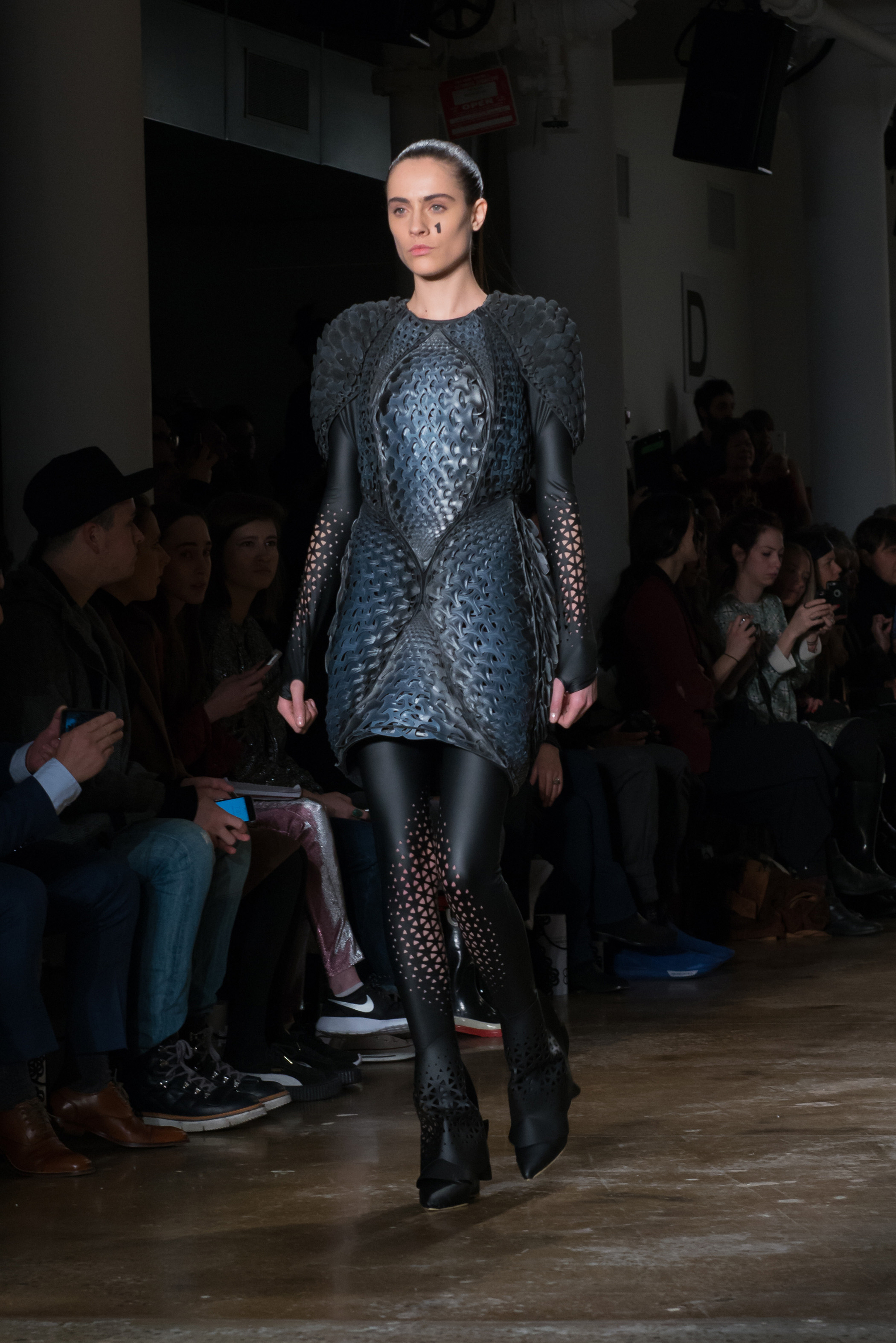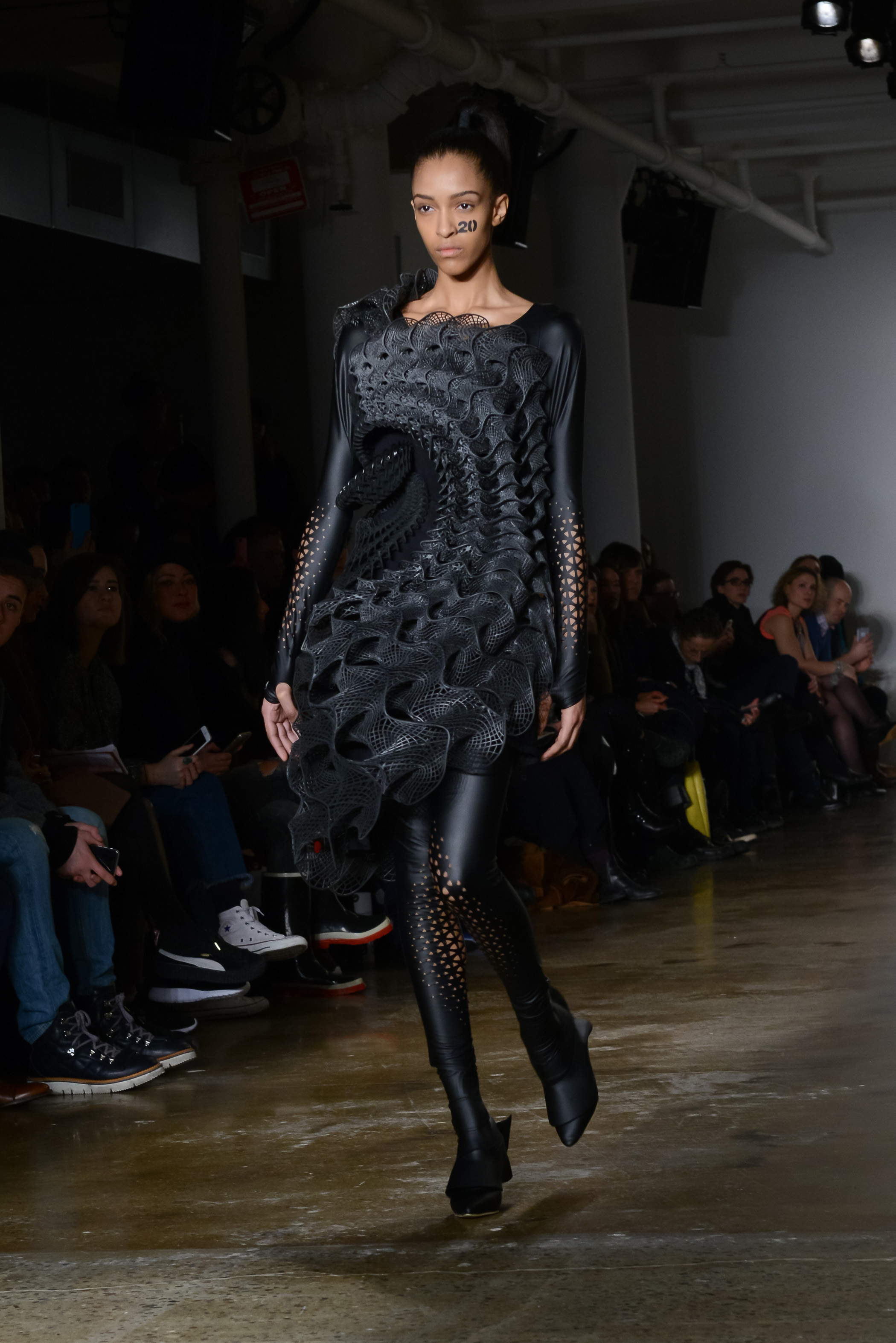Over the past couple of years, the fashion industry has started to take notice of the functional and artistic value of using 3D printing technology. To find proof of this, you need not look further than New York Fashion Week, which has seen a huge spike of 3D printing technology on the runway as of recently. From the 3D printed fabrics used in Katya Leonovich’s Spring 2015 line to the shape-shifting 3D printed dress in Chromat’s MOMENTUM line, NYFW has set the stage for designers to use the emergence of 3D printing technology in a multitude of ways. This year will be no different it seems. 3D printing will once again be in the NYFW limelight with a collaboration between fashion designers threeASFOUR and New York-based designer Travis Fitch, who will be displaying two 3D printed dresses in their Fall/Winter Runway Show thanks to the 3D printing technology of Stratasys.

“Not only were the 3D printing capabilities of the Objet500 Connex3 essential in the production of the dress, but the entire design from its initial conception was intended to maximize the potentials inherent to this technology,” said threeASFOUR’s Adi Gil. “The interwoven nature of the geometry could not be produced in a traditional manner, and it was critical to us that the design should evoke a language unique to 3D printing.”

The Pangolin dress, which was derived from a previous threeASFOUR design, was composed of interlocking weaves that were meant to biomimick natural animal textures. The flexible material allows for proper body movement, and also alternates itself between transparency and privacy, creating a geometrically driven dress that transforms through movement of the body. The Harmonograph dress was a unique and complex mixture between geometry, biology, and logarithms, creating a Fibonacci sequence-like garment that circles around the body in three spirals. This particular piece really caught my attention, appearing as if the geometric sequence of spirals were flowing outward from the dress towards the crowd.

“As artists and designers, it is our prerogative – and our nature – to explore the bounds of new technological opportunities, and to push the limits of the way in which forms are created,” said Gil. “As the most advanced 3D printed dresses that we have created to date, we are extremely excited to showcase these pieces and demonstrate the unique possibilities unfolding at the intersection of fashion, design and technology.”
These mind-blowing pieces prove both the value of 3D printing in fashion and also the potential for Stratasys’ Nano Enhanced Elastomeric Technology material. The two dresses were shown off earlier this week at Milk Studios, and as far as I’m concerned, demonstrate one of the most innovative uses of 3D printing in fashion I’ve seen at NYFW!



